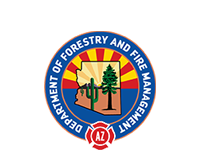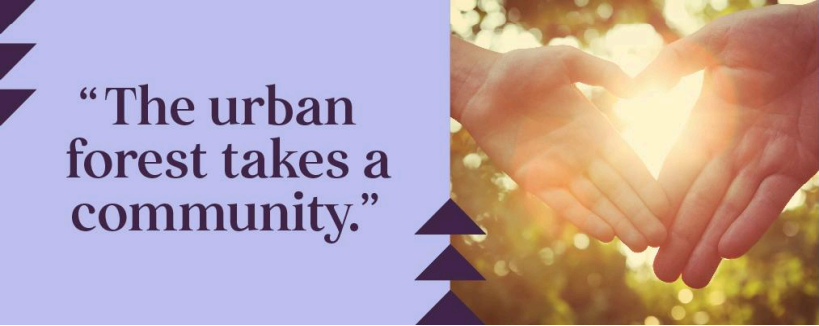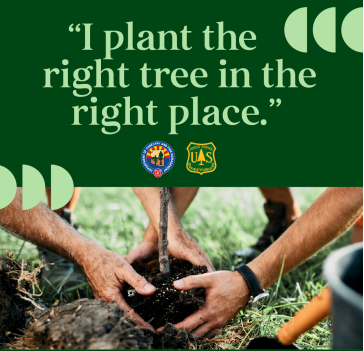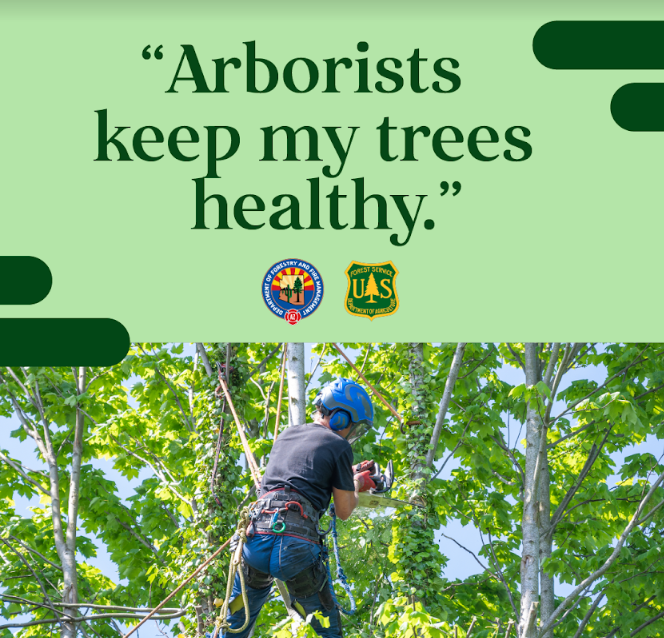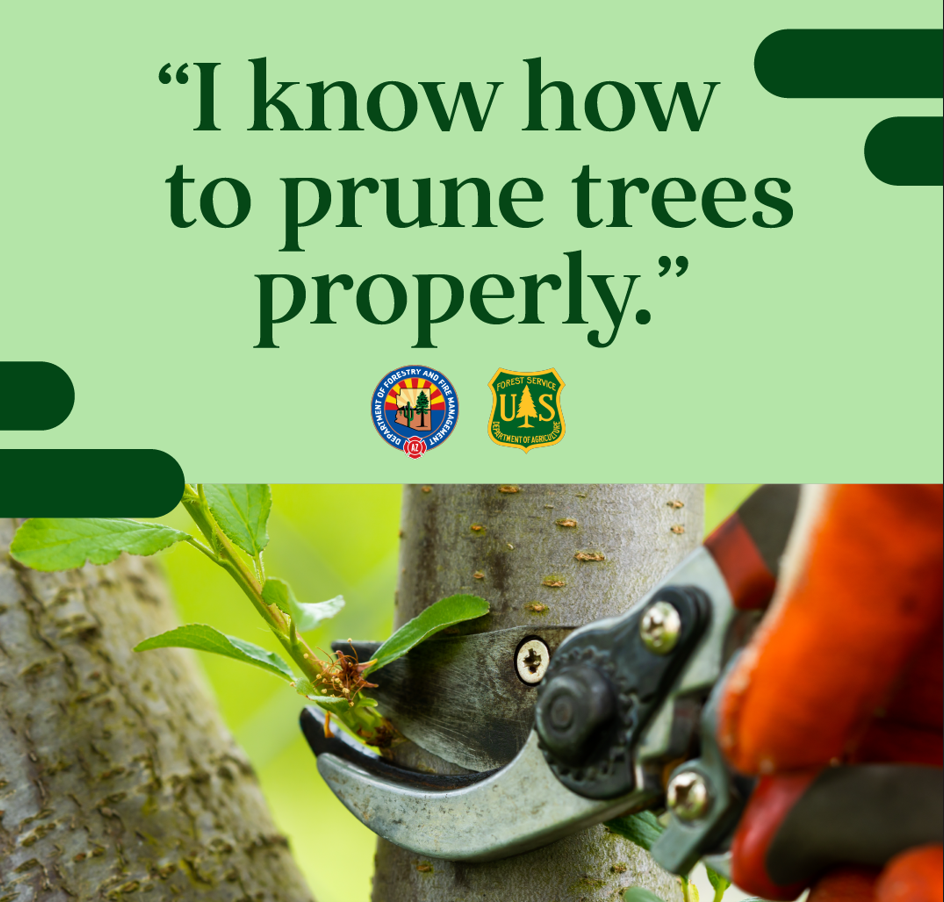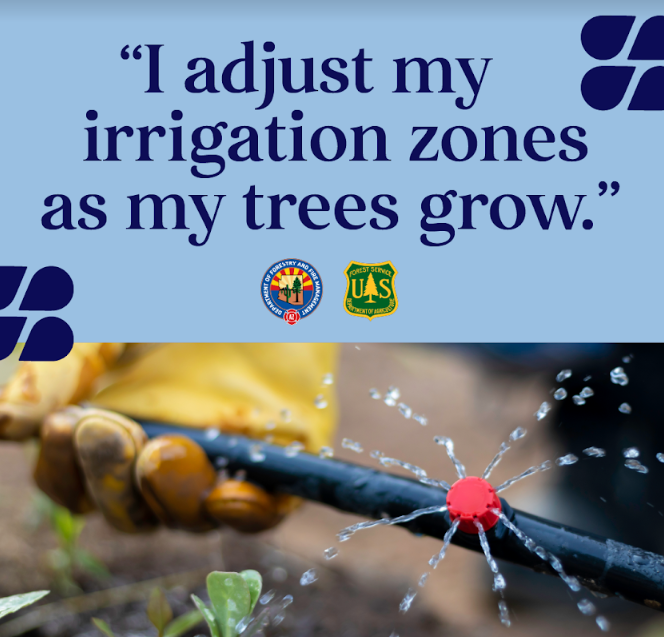Tree Care
Our urban forests provide a wealth of resources, from improving human health and environmental conditions to increasing habitat for birds and other animals; they also add beauty to our neighborhoods. Our city trees are "green infrastructure," reducing pollution, saving energy, providing shade, and mitigating stormwater runoff. Proper planting and maintenance of trees are essential activities for reaping the maximum benefits of a healthy urban canopy. Mature, healthy trees provide the most benefits, so it’s essential to protect our urban forests!
Tree Equity refers to the distribution of urban tree canopy among our neighborhoods. The Tree Equity Score Tool from American Forests shows the disparity in shade cover between higher and lower-income neighborhoods across the state. We can all take responsibility for maintaining healthy urban forests! Ensuring that everyone has access to the benefits of the urban forest, regardless of their income level, is crucial to our community's health and well-being.
Below are some resources our Urban and Community Forestry Team recommends for ensuring a healthy urban forest. You can reach out to one of our team's Certified Arborists to ask questions at [email protected].
Tree Planting
Trees are living things and provide "green infrastructure," or natural systems that provide structure in our communities. Before planting a tree, consider choosing the Right tree for the Right Place. Carefully select healthy trees from your local nursery (Buying High-Quality Trees). And avoid planting near electrical utility infrastructure (APS Right Tree, Right Place Planting Guide) (Árbol adecuado, lugar corrector).
How to plant a new tree (Guia de Plantación de Árboles en Arizona)
- Don’t plant too deep - keep the trunk flare above the soil
- Remove the nursery stake
- Only stake trees with wire for up to a year
- When planting, there is no need to stomp down the dirt or compact it. Compacted soil means the tree roots cannot get enough oxygen and water.
Plant Native Trees
We recommend planting native trees whenever possible. Native trees have a better chance of surviving and typically require less attention than non-native trees. They also serve as a wildlife habitat for local animals, and are more resistant to harmful pests. However, there are some non-native species suitable for similar climates, so those may be worth considering at your local nursery. View our list of recommended trees at the bottom of this page.
- Best Practices for Using Native Trees to Increase Urban Climate Resilience
- 10 Best Practices for Using Native Trees Handout
- Plant Native Trees to Increase Tucson's Climate Resilience Brochure
Hire a Certified Arborist
Certified Arborists are tree professionals specializing in tree care, not just landscaping. Certified Arborists and Tree Care Professionals are up-to-date on the latest tree care principles and holistically understand how to best care for your trees. If you have a tree that needs more than light maintenance, consider consulting with or hiring a Certified Arborist. You can find individuals and companies with this credential on the International Society of Arboriculture’s Trees are Good website here.
- Better tree care means healthier trees, which live longer and offer more economic and health benefits.
- Workforce Development Programs for the arboriculture industry can help people jump-start their careers in tree care. Contact [email protected] for more information.
- Visit the Arizona Community Tree Council Website for information about the Arizona-specific professional association for arborists.
Pruning
If you choose to prune your trees, rather than hiring a Certified Arborist, be sure to use proper pruning techniques. Don’t over-prune - no more than 25% of the tree canopy or crown in one year. Use the correct tools, such as hand pruners, loppers, and pole saws, and follow the recommended cleaning practices to achieve the best and healthiest results.
- Trees Are Good - Pruning Young Trees (Poda de árboles jóvenes)
- Trees Are Good - Pruning Mature Trees (Cuidado de los árboles maduros)
- AZ Cooperative Extension Pruning Citrus
- AZ Cooperative Extension Pruning Deciduous Shade Trees
Water Management
Consider changing water needs as trees age and as seasons change. Trees need more frequent watering initially, followed by deep, slow watering once they are established. Trees should be watered along the "drip line," or the edge of the canopy. Plan to move irrigation emitters as the tree grows and the root zone expands. Ensure that deep watering reaches approximately 12 to 18 inches into the soil. Well-established trees don’t need to be watered as much or as often. Visit the Arizona Municipal Water Users' Association Website for detailed watering instructions.
- AMWUA's Landscape Watering by the Numbers - An In-depth Guide
- AZ Cooperative Extension's Watering Trees and Shrubs Guide
- AZ Cooperative Extension Irrigating Citrus Trees
Arizona Specific Tree Care
Below are resources specific to tree care in Arizona.
- 9 Tree Care Tips and Techniques from the Arbor Day Foundation: Step-by-step guidelines for selecting, planting, and caring for trees
- Low Desert Citrus Varieties from AZ Cooperative Extension: Selection, care, and estimated harvest dates for citrus varieties in Arizona
- Landscape Plants for the Arizona Desert from AMWUA: Searchable guide to plant selection for Arizona
- Urban Tree Threats for Arizona and New Mexico
- Recursos generales para el cuidado de árboles from Trees Are Good
Arizona Plant Climate Zones
Climate zones and Plant Hardiness Zones in Arizona vary from the low subtropical desert areas to the coldest mountain and intermountain areas of the 48 contiguous United States. These differences in climate dictate what trees are most suitable in each zone. Review our Arizona Urban Tree Map Resources for more information, or select a tree from the list below.
Trees Native to Arizona (below 4,500 feet)
- velvet mesquite
- screwbean mesquite
- desert ironwood
- catclaw acacia
- white thorn acacia
- neatleaf hackberry
- foothills palo verde
- blue palo verde
- desert willow
Trees Native to Arizona (between 4,500 feet and 6,000 feet)
- boxelder maple
- water birch
- netleaf hackberry
- western redbud
- Arizona cypress
- singleleaf ash
- Arizona ash
- Arizona walnut
- alligator juniper
- one-seed juniper
- pinyon pine
- Arizona sycamore
- Fremont cottonwood
- chokecherry
- Emory oak
- Gambel oak
- shrub live oak
- Goodding’s willow
